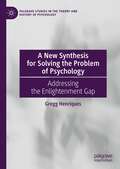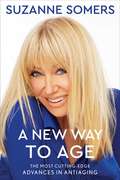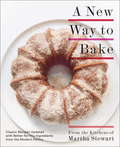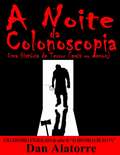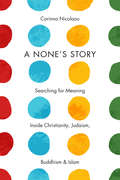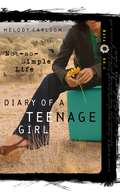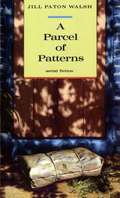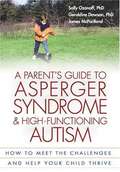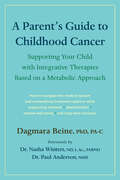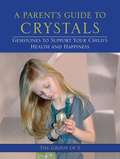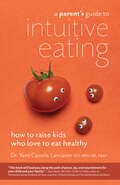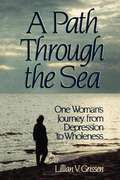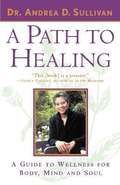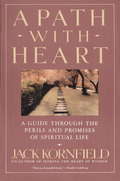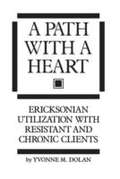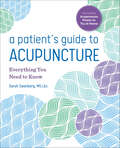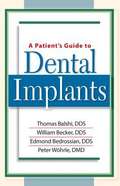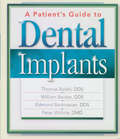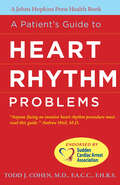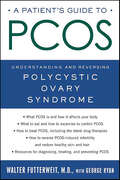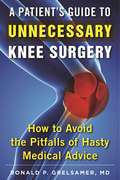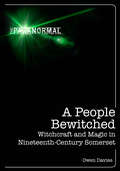- Table View
- List View
A New Synthesis for Solving the Problem of Psychology: Addressing the Enlightenment Gap (Palgrave Studies in the Theory and History of Psychology)
by Gregg HenriquesIn this incisive analysis of academic psychology, Gregg Henriques examines the fragmented nature of the discipline and explains why the field has had enormous difficulty specifying its subject matter and how this has limited its ability to advance our knowledge of the human condition. He traces the origins of the problem of psychology to a deep and profound gap in our knowledge systems that emerged in the context of the scientific Enlightenment.To address this problem, this book introduces a new vision for scientific psychology called mental behaviorism. The approach is anchored to a comprehensive metapsychological framework that integrates insights from physics and cosmic evolution, neuroscience, the cognitive and behavioral sciences, developmental and complex adaptive systems theory, attachment theory, phenomenology, and social constructionist perspectives and is well grounded in the philosophy of science. Building on more than twenty years of work in theoretical psychology and drawing on a wide range of literature, Professor Henriques shows how this new approach to scientific knowledge fills in the gaps of our current understanding of psychology and can allow us to develop a more holistic and sophisticated way to understand animal and human mental behavioral patterns. This work will especially appeal to students and scholars of general psychology and theoretical psychology, as well as to historians and philosophers of science.
A New Way to Age: The Most Cutting-Edge Advances in Antiaging
by Suzanne SomersAt seventy-three years young, #1 New York Times bestselling author and health guru Suzanne Somers has established herself as a leading voice on antiaging. With A New Way to Age, she takes things a step further to present a revolutionary philosophy for a longer and better-quality life—in the form of easy-to understand lessons and doctor interviews that will make you feel like you&’ve just had the best checkup of your life. There is a new way to age. I&’m doing it and it&’s the best decision I&’ve ever made. I love this stage of my life: I have &‘juice,&’ joy, wisdom, and perspective; I have energy, vitality, clearheadedness, and strong bones. Most of us are far too comfortable with the present paradigm of aging, which normalizes pills, nursing homes, and &“the big three&”: heart disease, cancer, and Alzheimer&’s disease. But you don&’t have to accept this fate. Now there&’s a new way to grow older—with vibrancy, freedom, confidence, and a rockin&’ libido. This health bible from Suzanne Somers will explain how to stop aging like your parents and embrace cutting-edge techniques such as: balancing nutritional and mineral deficiencies; detoxifying your gut for weight loss; pain management with non-THC cannabis instead of harmful opioids; and much more. Aging well is mainly about the choices you make on a daily basis. It can be a fantastic process if you approach it wisely. After a lifetime of research, Suzanne came to a simple conclusion: what you lose in the aging process must be replaced with natural alternatives. In order to thrive you have to rid your body of chemicals and toxins. Start aging the new way today by joining Suzanne and her trailblazing doctors as they all but unearth the fountain of youth.
A New Way to Bake: Classic Recipes Updated with Better-for-You Ingredients from the Modern Pantry
by Editors of Martha Stewart LivingA must-have for every baker, with 130 recipes featuring bold new flavors and ingredients.Here is the go-to cookbook that definitively ushers the baking pantry beyond white flour and sugar to include natural sweeteners, whole-grain flours, and other better-for-you—and delicious—ingredients. The editors at Martha Stewart Living have explored the distinctive flavors and alluring textures of these healthful foods, and this book shares their very best results.A New Way to Bake has 130 foolproof recipes that showcase the many ways these newly accessible ingredients can transform traditional cookies, pies, cakes, breads, and more. Chocolate chip cookies gain greater depth with earthy farro flour, pancakes become protein powerhouses when made with quinoa, and lemon squares get a wonderfully crumbly crust and subtle nutty flavor thanks to coconut oil. Superfoods are right at home in these baked goods; granola has a dose of crunchy chia seeds, and gluten-free brownies have an extra chocolaty punch from cocoa nibs. With a DIY section for making your own nut butter, yogurt, coconut milk, and other basics, and more than 150 photographs, including step-by-step how-to images, A New Way to Bake is the next-generation home-baking bible.
A Noite Da Colonoscopia - Uma História De Terror (Mais Ou Menos)
by Dan Alatorre“Colonoscopia? De repente fazes 50 anos e do nada eles querem enfiar uma câmara de TV pela tua extremidade traseira acima. Fantástico.”Estas são as reflexões humorísticas de um gajo a começar a ficar um pouco mais velho e a ser realista sobre o assunto, tentando divertir-se na vida, dando um bom exemplo à sua filha de 3 anos de idade, e viver de acordo com as expectativas de si próprio e ao mesmo tempo manter uma visão bem-humorada sobre a vida.A bata do hospital que não fecha na parte de trás? A enfermeira que não lhe contou tudo o que ele precisava de saber sobre laxantes?Um dentista que usa os pés como alavanca para fazer uma extração de dente? Apenas mais um dia!Acompanha e ri connosco conforme avançamos nesta estrada de interação familiar e lições de vida à medida que aprendemos sobre a Noite da Colonoscopia!
A None's Story: Searching for Meaning Inside Christianity, Judaism, Buddhism, and Islam
by Corinna NicolaouThe rising population known as "nones" for its members' lack of religious affiliation is changing American society, politics, and culture. Many nones believe in God and even visit places of worship, but they do not identify with a specific faith or belong to a spiritual community. Corinna Nicolaou is a none, and in this layered narrative, she describes what it is like for her and thousands of others to live without religion or to be spiritual without committing to a specific faith.Nicolaou tours America's major traditional religions to see what, if anything, one might lack without God. She moves through Christianity's denominations, learning their tenets and worshiping alongside their followers. She travels to Los Angeles to immerse herself in Judaism, Berkeley to educate herself about Buddhism, and Dallas and Washington, D.C., to familiarize herself with Islam. She explores what light they can shed on the fears and failings of her past, and these encounters prove the significant role religion still plays in modern life. They also exemplify the vibrant relationship between religion and American culture and the enduring value it provides to immigrants and outsiders. Though she remains a devout none, Nicolaou's experiences reveal points of contact between the religious and the unaffiliated, suggesting that nones may be radically revising the practice of faith in contemporary times.
A Not So Jolly Christmas
by Bill WebsterThis easy-to-read booklet includes practical ways to help adults and children cope with grief at a time when everyone seems to be overflowing with gaiety. Includes a simple work sheet to assist with planning the holiday activities while acknowledging, respecting and moving through that hardest of all journeys--grieving the loss of a loved one. Although the book is oriented toward those who celebrate Christmas, poignant considerations for those who celebrate Hanukkah are also a part of this booklet. The majority of the booklet is practical and will be useful to anyone who is grieving a significant loss. No platitudes here. Good, solid, understanding suggestions. Dr. Webster has studied grief and experienced grief. He has devoted much of his work to helping others get through their process of grieving. This file should make an excellent embossed braille copy.
A Not-So-Simple Life (Diary of a Teenage Girl: Maya #1)
by Melody CarlsonFifteen-year-old Maya Stark seems to have it all-fame, fortune, a Beverly Hills lifestyle, and an eighties pop star dad who's making a comeback. But looks can be deceiving, and on the inside, Maya is miserable. Her parents are divorced, her dad is away on tour, and being biracial, she struggles with her identity. Then, to make matters worse, her mother has returned to using drugs and is quickly depleting their finances. In a plan to become emancipated from her messed-up mom, Maya takes a job on Rodeo Drive. Selling designer clothes compromises Maya's earth-friendly "green girl" values, but she is desperate.Just when Maya thinks she's got it all worked out, her life caves in. Her mom "embezzles" Maya's savings and is later arrested on DUI and cocaine possession charges and is facing jail time. With nowhere to live, Maya is sent to spend the summer with her relatives. In the collision of two very different worlds, Maya must figure out where she fits in-or does she fit in at all?From the Trade Paperback edition.
A Pandemic Is Worldwide (Let's-Read-and-Find-Out Science 2)
by Sarah L. ThomsonRead and find out the science behind a pandemic and how to stay safe in this illustrated, informative nonfiction picture book. Everybody gets sick now and then—maybe with a runny nose or a sore throat. But sometimes, a lot of people get sick at once. If a disease spreads all over the world, that’s a pandemic. The current COVID-19 pandemic has upended the lives of kids across the world and has caused fear and confusion as people in charge have given conflicting orders. Read to discover the answers to some of your biggest questions, including:What is a pandemic? How are they created and spread? Has anything like this ever happened before? What is a coronavirus? What can we do to stay safe and healthy?While pandemics are rare, several have happened throughout the world’s history, such as the bubonic plague and smallpox, and our scientists have observed and learned some important lessons, such as the importance of vaccines.This Level 2 Let’s-Read-and-Find-Out shares important facts about past and current pandemics, taking readers from the origin of the word “quarantine” and through history’s many pandemics, to milestones such as the first vaccine that helped end smallpox.This book also comes with a handwashing diagram, a glossary, and a timeline of past pandemics and their impact on the world.This is a clear and appealing science book for early elementary age kids, both at home and in the classroom. It's a Level 2 Let's-Read-and-Find-Out, which means the book explores more challenging concepts for children in the primary grades. The 100+ titles in this leading nonfiction series are:hands-on and visualacclaimed and trustedgreat for classroomsTop 10 reasons to love LRFOs:Entertain and educate at the same timeHave appealing, child-centered topicsDevelopmentally appropriate for emerging readersFocused; answering questions instead of using survey approachEmploy engaging picture book quality illustrationsUse simple charts and graphics to improve visual literacy skillsFeature hands-on activities to engage young scientistsMeet national science education standardsWritten/illustrated by award-winning authors/illustrators & vetted by an expert in the fieldOver 130 titles in print, meeting a wide range of kids' scientific interestsBooks in this series support the Common Core Learning Standards, Next Generation Science Standards, and the Science, Technology, Engineering, and Math (STEM) standards. Let's-Read-and-Find-Out is the winner of the American Association for the Advancement of Science/Subaru Science Books & Films Prize for Outstanding Science Series.
A Paraprofessional's Handbook for Working with Students Who Are Visually Impaired
by Cyral Miller Nancy LevackThis book was written to help increase the effectiveness of paraprofessionals and identify ways to help them work with the visually impaired. It stresses team work with other education professionals and gives first hand suggestions to overcome challenges to help the student grow.
A Parcel of Patterns
by Jill Paton Walsh"A parcel of patterns brought the plague to Eyam. A parcel sent up from London to George Vicars, a journeyman tailor, who was lodging with Mrs. Cooper in a cottage by the west end of the churchyard." So begins Mall Percival's account of how her village of Eyam struggled against the plague. George Vicars dies on September 6, 1665, and by the end of October, twenty-five more townsfolk have been buried. As the deaths continue, the villagers, including Mall, begin to panic--helpless to fight off the disease. Uncertain as to how it is contracted and passed from one person to another, Mall forces herself to make a sacrifice that radically changes her life--she decides to stops seeing Thomas Torre, a man from another village, the man she hopes to marry. In June of 1666, at their minister's urging, the entire village makes a pact to protect those who live in the surrounding countryside by staying within the boundaries of Eyam. Although Mall longs to see Thomas, she remains steadfast in her resolution, until one day Thomas runs into the center of Eyam, knowing that he will not be allowed to leave, yet fearing that Mall has died. Mall and Thomas marry, but their happiness is short-lived. Finally, in October of 1666, the pestilence subsides. Mall, overwhelmed by grief and sorrow, decides to write a chronicle of all she has witnessed in Eyam, hoping that it will set her free.
A Parent's Guide to Asperger Syndrome & High-Functioning Autism: How to Meet the Challenges and Help Your Child Thrive
by Sally Ozonoff Geraldine Dawson James McpartlandEmphasizing how to build on the talents and strengths of a high-functioning autistic child, it contains many useful case histories along with scientific and practical information.
A Parent's Guide to Childhood Cancer: Supporting Your Child with Integrative Therapies Based on a Metabolic Approach
by Dagmara Beine&“Indispensable . . . Dr. Beine provides a practical primer on integrative cancer therapies for children based on a metabolic framework of understanding the disease. I can&’t recommend [this book] enough.&”—Chris Kresser, MS, LAc, founder of Kresser Institute; New York Times bestselling authorAn invaluable, revolutionary, research-based resource for parents—grounded in nutrition, detoxification, and mental wellbeing, while aiming to reduce suffering and promote long-term recovery.&“Your child has cancer.&”Every day, forty-three American families hear these words, thrusting them headlong into the terrifying and unfamiliar territory of pediatric oncology.In A Parent&’s Guide to Childhood Cancer, pediatric oncology specialist Dagmara Beine guides readers through the most difficult scenario a parent will ever face—a child&’s diagnosis of life-threatening disease—and argues that the greatest tragedy of conventional oncology is its failure to incorporate safe, effective, and potentially life-saving integrative therapies.In A Parent&’s Guide to Childhood Cancer, Beine teaches parents how to effectively incorporate these integrative therapies alongside conventional oncology, including surgery, radiation, and chemotherapy. Beine&’s approach is grounded in the metabolic approach to cancer—pioneered by the work of Dr. Nasha Winters—applied to a wildly underserved cancer patient population: children.Topics include:Understanding diagnoses and how to go about seeking a second opinionAssembling a medical team that includes both conventional and integrative oncology expertsEssential tests—both conventional and integrative—and how to interpret themHow to develop a metabolically healthy, anti-cancer nutrition planIntegrative therapies for specific diagnoses and reducing side effectsHow to harness post-treatment detoxification and gut-healing protocolsThe critical importance of, sleep, movement, stress reduction, and time outsidePlus much moreTherapies covered include:MistletoeN-Acetyl CysteineIV Vitamin CCannabinoidsGlutamineGlutathioneLow-Dose NaltrexoneMelatoninHyperbaric OxygenAnd moreWith cancer, Beine says, there is no silver bullet. But with a metabolic approach and the wise integration of simple and effective complementary therapies under the supervision of a metabolic oncology practitioner, there is a path forward to what every parent wants for their sons and daughters: a happy childhood.
A Parent's Guide to Crystals: Gemstones to Support Your Child's Health and Happiness
by Group Of 5Illustrated by lively full-color photographs throughout, A Parent's Guide to Crystals addresses the diverse physical and emotional spiritual needs of children during major developmental stages and events. From sections on crystal remedies for common physical complaints such as colic, teething, and tummy aches to recommendations for gemstones that support social skills, academic prowess, and self-assertiveness, this book is designed to be helpful to parents who wish to offer their children gentle holistic alternatives to conventional approaches.From the Trade Paperback edition.
A Parent's Guide to Intuitive Eating: How to Raise Kids Who Love to Eat Healthy
by Dr. Yami Cazorla-LancasterTurn picky eaters into happy, healthy eaters!Breaking down intuitive eating in a way that&’s easy to understand and even easier to implement, this book shows you how to help your children develop a positive relationship with food. It offers a system that builds healthy habits and better mindsets that will last a lifetime. Through the techniques and tips in this book, you&’ll discover how to eliminate stress, anxiety and food battles and instead enjoy feeding your confident eater!Written by a board-certified pediatrician and mom, this book will set your family up for success when it comes to making decisions in the kitchen, grocery store, and restaurant. The actionable advice in A Parent&’s Guide to Intuitive Eating will transform healthy eating from a chore into a happy habit!
A Path Through the Sea: One Woman's Journey from Depression to Wholeness
by Lillian V. GrissenIn this frank, instructive, and heartening personal story, Lillian Grissen tells about the severe depression that she herself experienced. Her pain - mental, emotional, and physical pain - was excruciating, and at first she felt hopelessly trapped in it. But with the help of a gifted Christian psychiatrist, Grissen began to stop blaming herself and to confront the core of her problem - her relationship as a child with her mother. Over a period of five long years - also with her husband's support, her pastor's compassionate counsel, and the right combination of therapy and medication, and God's gracious strength - Grissen gradually climbed out of the pit of her depression. A profound yet simple book about a complex condition: clinical depression. Only one who has experienced the pain of the darkness of depression and the joy of the light of recovery could have had the courage to trace the arduous journey. - Katie Funk Wiebe, author of Bless Me Too, My Father
A Path To Healing: A Guide To Wellness For Body, Mind, And Soul
by Andrea D. SullivanIn A Path to Healing, Dr. Andrea Sullivan, one of the nation's leading naturopaths, tells readers everything they need to know about establishing wellness in their lives. In easy-to-understand language, she demystifies alternative medicine and prescribes an overall guide to maintaining health and keeping disease at bay. Special attention is devoted to the most common and dangerous diseases, including: stress hypertension cancer diabetes obesity HIV/AIDS arthritis depression In the tradition of Dr. Andrew Weil's Natural Health, Natural Medicine, A Path to Healing is a necessary prescription for creating a healthy and balanced life.
A Path with Heart: A Guide Through the Perils and Promises of Spiritual Life
by Jack KornfieldA guide to reconciling Buddhist spirituality with the American way of life addresses the challenges of spiritual living in the modern world and offers guidance for bringing a sense of the sacred to everyday experience.
A Path with a Heart: Ericksonian Utilization with Resistant and Chronic Clients
by Yvonne M. DolanAn approach for psychotherapists to take with clients who have had long-term and deep-seated psychological difficulties.
A Patient's Guide to Acupuncture: Everything You Need to Know
by Sarah SwanbergYour handbook to heal with acupunctureHow does acupuncture work? Does it hurt? And can it really help you? If you're just discovering the wonders of this ancient Chinese practice, this book will teach you everything you need to understand and fully feel the benefits of holistic healing.A Patient's Guide to Acupuncture offers a comprehensive introduction to acupuncture, including its history and fundamental principles, what to expect during treatment, and how it can help a variety of common ailments. This book is an illuminating reference for anyone who is just beginning to explore the world of acupuncture.A Patient's Guide to Acupuncture includes:Essential introduction—Learn about the history of acupuncture, the traditional principles behind how and why it works, and its modern-day research and practice.Practical guidance—Find out how to choose a practitioner, what to expect from treatment, and how you can maximize benefits by using acupressure points at home.Acupuncture in action—Discover how acupuncture helps treat over 20 common ailments, including anxiety, allergies, back pain, migraines, and much more.This book is the beginning of your journey to restore balance to your mind, body, and soul through acupuncture. Look inside and find the answers you need to heal naturally.
A Patient's Guide to Dental Implants
by Thomas Balshi William Becker Edmond Bedrossian Peter WohrleDo You Need Teeth Replacement? Are you missing a tooth? Several teeth? If so, perhaps you're like many individuals--you already wear a bridge or dentures or are considering them. But have you considered dental implants? They are "permanent teeth" that are inserted into the jawbone and function like natural teeth. They offer a more natural appearance and greater comfort than bridges or dentures. Although the trend toward dental implants is growing rapidly, you, like many consumers, may not fully understand how they work. The doctors who wrote this book recognized the need for consumer information. All specialists in dental implants, they provide answers to such questions as: * What are the benefits of dental implants? * Who is a candidate for dental implants? * How are the implants inserted? * Are the procedures painful? * How long do implants last? * Are there risks or possible complications? * How do you choose a qualified dentist or specialist? * What follow-up care is required? Your Complete Guide to Dental Implants
A Patient's Guide to Dental Implants
by Thomas Balshi William Becker Edmond Bedrossian Peter WohrleDo You Need Teeth Replacement? Are you missing a tooth? Several teeth? If so, perhaps you're like many individuals—you already wear a bridge or dentures or are considering them. But have you considered dental implants? They are "permanent teeth" that are inserted into the jawbone and function like natural teeth. They offer a more natural appearance and greater comfort than bridges or dentures. Although the trend toward dental implants is growing rapidly, you, like many consumers, may not fully understand how they work. The doctors who wrote this book recognized the need for consumer information. All specialists in dental implants, they provide answers to such questions as: • What are the benefits of dental implants? • Who is a candidate for dental implants? • How are the implants inserted? • Are the procedures painful? • How long do implants last? • Are there risks or possible complications? • How do you choose a qualified dentist or specialist? • What follow-up care is required? Your Complete Guide to Dental Implants
A Patient's Guide to Heart Rhythm Problems (A Johns Hopkins Press Health Book)
by Todd J. CohenA Library Journal Best Consumer Health Book of 2010Heart rhythm problems can be a matter of life or death. In this easy-to-read guide, Dr. Todd Cohen provides comprehensive information to help people with heart rhythm problems (arrhythmias) get an accurate diagnosis and appropriate treatment. Dr. Cohen tells readers what they need to know about palpitations, rapid heart rhythms (tachycardias), slow heart rhythms (bradycardias), cardiac arrest, and other conditions related to irregular heartbeats.With the goal of informing and empowering heart patients, Dr. Cohen describes the heart's basic function, the various conditions associated with arrhythmia, and recommended courses of treatment. He discusses such procedures as tilt table testing, electrophysiology studies, catheter ablation, and device implantation (including cardiac monitors, pacemakers, defibrillators, and biventricular devices); explains the essentials of CPR and the use of Automatic External Defibrillators (AEDs); and presents the latest guidelines from the American College of Cardiology, the American Heart Association, and the Heart Rhythm Society. A Patient's Guide to Heart Rhythm Problems will help readers understand• how the heart works and what can go wrong• the tests and other diagnostic procedures they may undergo• how their doctor reaches a diagnosis• what their diagnosis means• how their doctor might treat the problem• when medication alone is sufficient treatment• when pacemaker, defibrillator, or biventricular therapy is appropriate• how to get the best possible medical care—in and out of the hospitalEndorsed by the Sudden Cardiac Arrest Association, this essential resource features tables highlighting key information, as well as patient narratives that provide personal insight into arrhythmia tests, treatments, and technologies.
A Patient's Guide to PCOS: Understanding and Reversing Polycystic Ovary Syndrome
by George Ryan Walter FutterweitA comprehensive guide to polycystic ovary syndrome, from a leading authority on the condition One in ten American women of childbearing age is affected by polycystic ovary syndrome (PCOS) to some degree, and many suffer from serious symptoms, such as infertility, early miscarriage, chronic pelvic pain, weight gain, high blood pressure, acne, and abnormal hair growth. PCOS is by far the most common hormone imbalance in women of this age group, yet few women understand the threat it poses to their health—or how to prevent it. In A Patient's Guide to PCOS, Dr. Walter Futterweit, a foremost authority on PCOS in America, tells women everything they need to know about this condition and how to treat it. Drawing on his twenty-five years researching and treating the condition and his ongoing long-term study of more than a thousand women with PCOS, Futterweit discusses• what PCOS is and how it affects your body• what to eat and how to exercise to control PCOS• all the treatment options, including the latest drug therapies• how to reverse PCOS-induced infertility and restore healthy skin and hair• resources for preventing, diagnosing, and treating PCOSThis comprehensive guide contains everything women need to know about PCOS—from identifying warning signs and seeking a diagnosis to finding emotional support in recovery—to regain their health and resume their lives.
A Patient's Guide to Unnecessary Knee Surgery: How to Avoid the Pitfalls of Hasty Medical Advice
by Ronald P. GrelsamerEvery year millions of Americas are told by an orthopedic surgeon that the only way to successfully get rid of their knee pain is to undergo some form of knee surgery. But so many of these procedures could have been avoided if the patient was fully informed regarding all the intricacies of his or her condition.In A Patient’s Guide to Unnecessary Knee Surgery, respected orthopedic surgeon Ronald P. Grelsamer intricately and accessibly conveys all the information regarding the knee and surrounding areas that any person suffering from knee pain would ever need to know in order to make an informed decision about treatment for his or her condition. Within this guide, you’ll find chapters on pertinent topics such as: Reasons behind some of the leading causes of knee pain Tips on how to understand the results of an MRI Exercises to boost your knee health Advice on how to find the best doctor for your needs And ten other areas of knee-related healthSo if you’re suffering from knee pain, make sure to you grab A Patient’s Guide to Unnecessary Knee Surgery before you decide to undergo surgery.
A People Bewitched: Witchcraft and Magic in Nineteenth-Century Somerset (The Paranormal)
by Owen DaviesThe belief in witchcraft and magic was widespread in nineteenth-century Somerset. Witches were blamed for causing the ill health and death of people and their animals. Those accused of witchcraft often found themselves being ostracised and beaten by their neighbours. Magical practitioners known as cunning-folk drove a thriving trade not only in curing the bewitched, but also in detecting lost property, inducing love, and predicting the future. Astrologers and fortune-tellers were also widely consulted.This ebook is a fascinating exploration of the lives of all those who were caught up in the world of magic - witches and their victims, and occult practitioners and their clients. It will appeal to anyone with a general interest in witchcraft, rural history, folklore or the history of Somerset.
